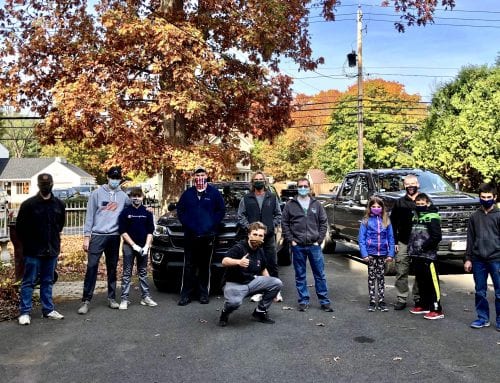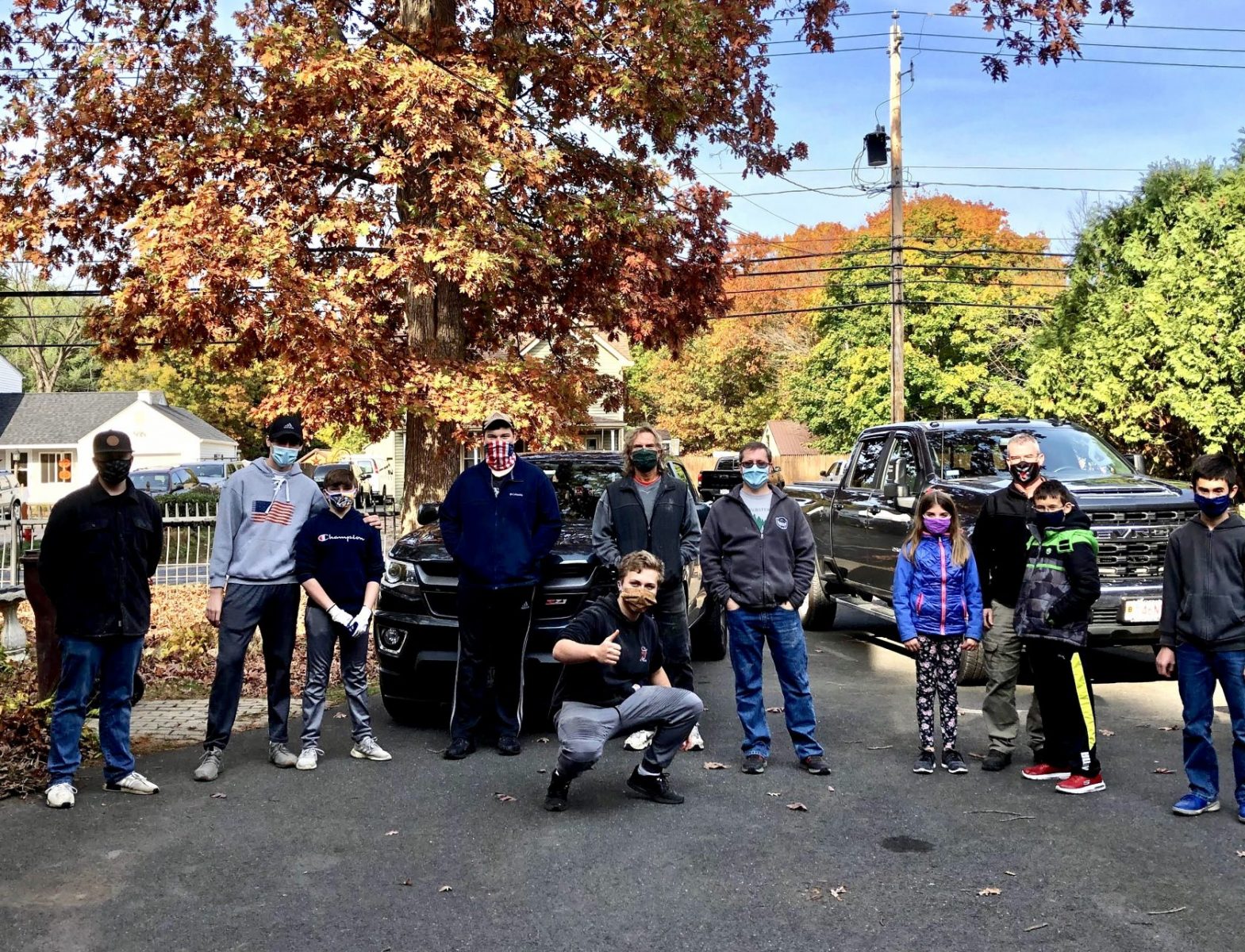
Troop 109 bat house crew (L-R)Billy Fouche, Matt Mcmahon, Sean Mcmahon, Zach hall, Alex Dawicki (kneeling), Paul Dawicki behind him, Tim Mcmahon, Chris Cekovsky, Brandon Cekovsky, and Brandon Barnes. (SUBMITTED PHOTO)
WESTFIELD – Westfield High School senior Alex Dawicki is building a dozen bat houses that he plans to place around Westfield for his Eagle Scout project.
Dawicki, a member of Boy Scout Troop 109, said he was looking for ideas for an Eagle project and saw this one on a list compiled by Scoutmaster Dave Flaherty. “I always thought bats were cool, and they’re really, really good for the environment,” he said, adding that he had not seen any bat houses in Westfield and he thought putting some up would be a good thing to do.
Dawicki said that the bat houses are larger than typical bird houses, but they are flat. Although they don’t seem very spacious, 300 to 400 bats can fit inside one of them.
“The bat houses are more for nurseries, to raise their young. They’re just a safe place to be. I live near a church, and I see them living in the tower. In late summer, you can see them flocking. It’s kind of cool to watch,” he said, adding, “I used to see them all the time. Now I don’t see them often.”
Dawicki said the closest he’d ever been to one was in sixth grade, when a bat flew into his teacher’s room. “We all had to clear out of there so they could catch it. We were all laughing at the janitors trying to catch it,” he said.
When he was doing research into bats for the project, he learned that the two most prevalent bat species in the area are the big brown bat and the little brown bat, which is now endangered. He said altogether there are 11 different species of bats in the area, all relatively the same size.
Dawicki plans to build 12 houses, each designed to take up a quarter sheet of plywood. He said they need to be placed 20 feet in the air. “Bats can’t take off from standing, they have to fall first to take off,” he said, adding that ideally, the houses would go on massive poles, but trees are his only option.
He said putting them at the edge of a forest would be fine, but not the inside, if it’s too cramped. “They like big open spaces with trees at the edge,” Dawicki said.
For the project, Dawicki met with Conservation Coordinator Meredith Borenstein and asked her department to be the official beneficiary. Dawicki said the city owns a lot of conservation land.
Borenstein brought the project to the Conservation Commission meeting on Nov, 10 and asked for suggestions on where to place the boxes. The commissioners suggested golf courses, among other ideas, and said they would get back to her.
Dawicki is planning to study chemical engineering in college. He said one of his potential career tracks is to become an environmental engineer. “Upon looking into (bats) for my research, I never realized how important they were for the ecosystem. They do a lot of stuff,” he said.
Meanwhile, he is working on completing the project before Dec. 20, when he turns 18. He has a group of volunteers from his troop that he’s working with on it, who he said are finding it interesting. “Everybody seems to be pretty intrigued by it. Not a lot of people had heard of bat houses before.”








